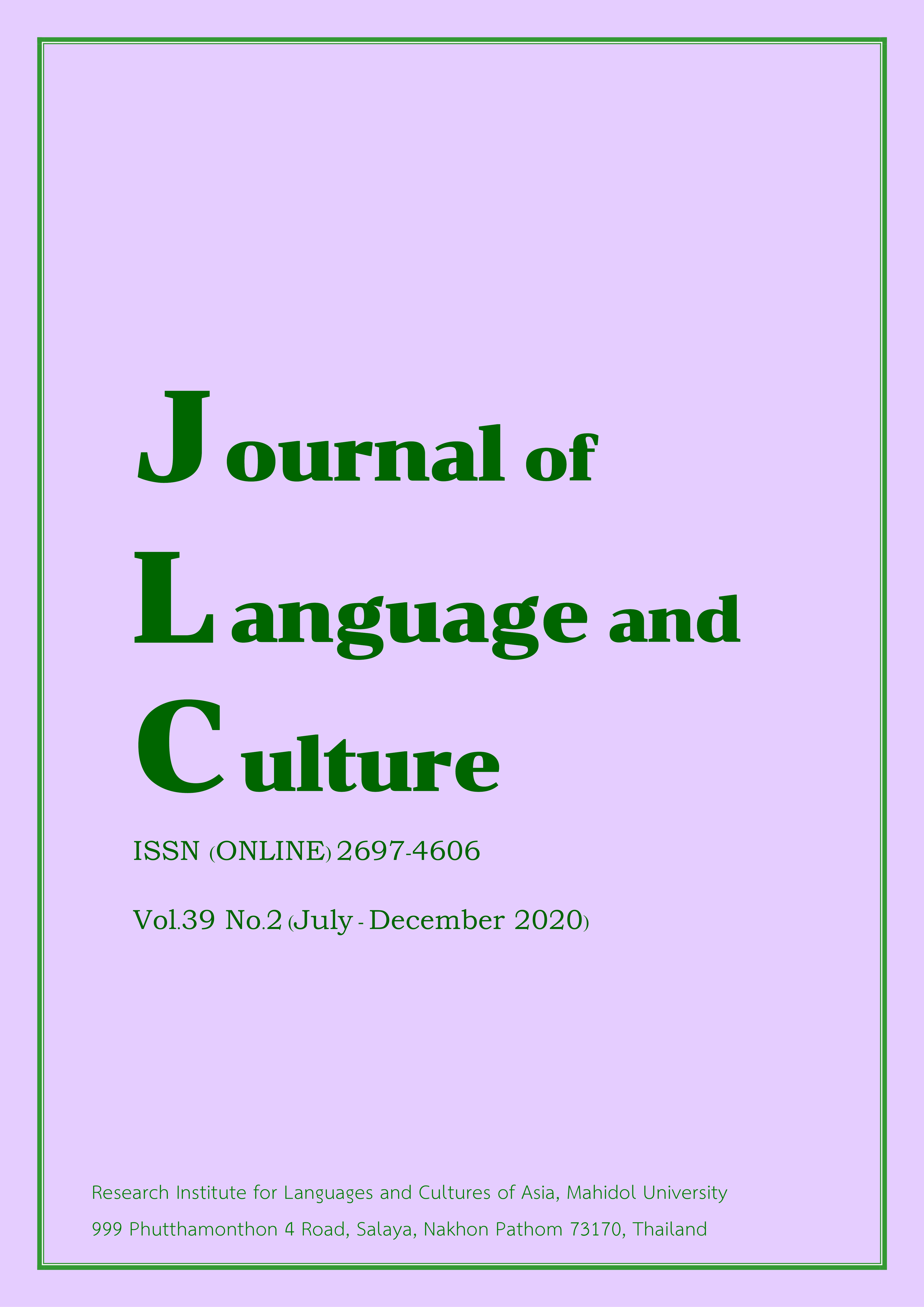Consonant variation among three generations of speakers of the Bisu language
Main Article Content
Abstract
This research investigated the phonological variations among three age groups who speak the Bisu language. The study aimed to examine the sound variations and shift that were taking place at the time. The researcher conducted an interview employing a list comprising 500 word items. Fifteen Bisu speakers participated in the interview and were divided into three age groups: age - group 1, aged 55 and over; age - group 2, aged 35-45; and age - group 3, aged 18-25. The data were analyzed qualitatively focusing on the consonant sounds. The results revealed that there were both intra-and extra-linguistic factors influencing the phonological variation, namely the nature of the language, the ease articulation of the consonant sounds, and language contact. There were 20 consonant variations which resulted from simplifying the pronunciation. The characteristics of these variations are worth noting. The assimilation of consonants was the most remarkable in the age-group 3 (18-25). Moreover, the deletion of consonant clusters in the primary and secondary syllables, along with the sound shift from initial consonant clusters to vowel sounds, was evident among age-group 2 and 3. In addition, the insertion of the final consonant in open-syllabled words was distinct in the age-group 3.
Article Details
The articles featured in the Journal of Language and Culture (JLC) constitute academic works representing the viewpoints of the respective author(s). It is crucial to note that these opinions do not necessarily reflect those of the Editorial Board.
All articles published in JLC are released under the Creative Commons Attribution 4.0 International License (CC BY 4.0). This license grants permission for unrestricted use, distribution, and reproduction in any medium, provided proper credit is given to the original author(s) and the source.


